Agronomy Updates
West – Con Liquid Fertilizer Storage Tanks
White in Color vs Black
From the time they were built, West-Con’s liquid storage tanks have always been white, and a very nice, clean looking white at that. Going forward, starting with the large tanks in Holloway, you will likely see those big white tanks slowly transition into big black tanks. The tank itself is technically the second form of containment, as inside each of those big tanks, is a very large rubber liner. All four of the big tanks in Holloway and now, the two 2-million-gallon tanks in Twin Brooks have them. That being said, it’s very important when it is time to add, mix or pull products out of those tanks, that we be very careful not to alter, cut or damage those liners. Everyone knows how cold our Minnesota winters can be. The products in these tanks are subject to those extreme temperatures, and are not immune to changing the integrity of the product inside of them depending on how cold and how long they are subject to those extreme temps. The temperatures of the products inside can vary somewhat dramatically based on the color of the tanks and the ability to absorb or reflect solar radiation. The lighter colors such as white or beige reflect more of the sun’s rays, absorbing less heat, whereas the darker colors like black, dark blue or dark green absorb more of the sun’s radiant energy, which leads to retaining more heat. Everyone can see what the reasoning is, but the effects of the color differences on products inside these tanks can be anywhere from 5-25 degrees warmer in the darker tanks, averaging closer to that 15-20 degrees warmer. This variance will greatly impact the products and the state they are in, which in turn will hopefully allow us to add, mix, and move product as early as needed when each upcoming spring approaches. Each of the liquid products we handle can react differently to the extreme cold temperatures, but we will be starting with the big tanks that hold ATS (ammonium thiosulfate) first, likely followed by the 28% tanks from there. White tanks will continue to be the color of choice for most fuel products, so they reflect and reduce the amount of heat generated.
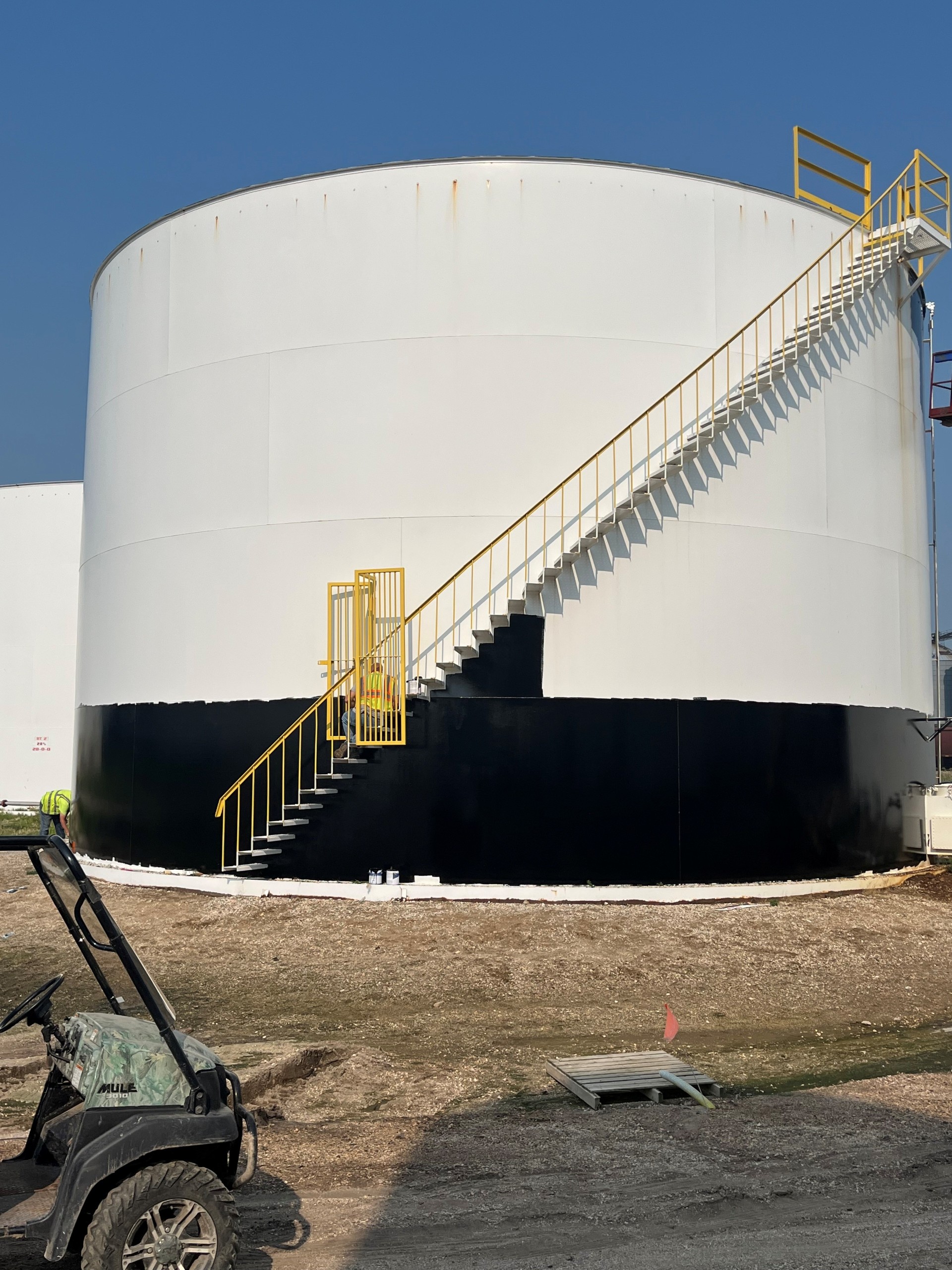
Key Dates
Minnesota South Dakota
Corn Early Plant Date April 10th April 10th
Corn Final Plant Date May 31st May 25th
Soybeans Early Plant Date April 20th April 25th
Soybeans Final Plant Date June 10th June 10th
~~~~~~~~~~~
Soybean Seed Treatment
Seed treatments play a critical role in protecting soybeans during the most vulnerable stages of growth—germination and emergence. By safeguarding against early-season diseases, insects, and environmental stressors, seed treatments promote healthy stands, stronger roots, and improved yield potential. Especially in cool, wet soils or fields with a history of disease or pest pressure, the value of seed treatments becomes even more evident. Below you will find the seed treatments that we offer and the benefits they provide. Remember to contact one of our agronomists with any questions you may have.
Click here for more information.
~~~~~~~~~~~
Split Applying Nitrogen
The amount of nitrogen you need depends on a few different things, but one of the major factors is if you plan on split applying. Split applying nitrogen can be very important depending on your soil type. For example, if you have a heavier soil with good water holding capacity then you could probably get away with 1 maybe 2 application of nitrogen. If you have a more sandier type soil, that water will infiltrate your soil quicker, then you should think about applying 2-3 times. Not only to make sure your plants getting enough nitrogen but also so your nitrogen isn’t leaching away. Another solution to this problem is to use a nitrogen stabilizer or use a coated nitrogen source that slowly releases nitrogen. A few of the products that we carry to help with nitrogen loss are Nitrain, Instinct, Puryield, and Blackmax 22. Nitrain is a nitrogen stabilizer designed to reduce nitrogen volatilization in urea based fertilizers, it does this by slowing down or inhibiting the activity of the urease enzymes. Instinct is also a nitrogen stabilizer but works by slowing down the conversion of ammonium into nitrate which is the form of nitrogen that leaches easily, keeping it in the soil longer. Puryield is urea with a polymer coating on it, this polymer coating works by sitting in the soil being broke down by natural elements and slowly releasing nitrogen. Blackmax 22/WSG, this isn’t necessarily a stabilizer but works great when applied with nitrogen. Blackmax works by keeping the carbon to nitrogen ratio in balance, the microbes in your soil need both nitrogen and carbon to help break down nutrients being applied or that are already in the soil. A typical range for nitrogen is anywhere from 0.8 to 1.1 lbs. of nitrogen per bushel yield goal, how many times you apply fertilizer and the other factors listed above affect how many pounds you should be using.
~~~~~~~~~~~
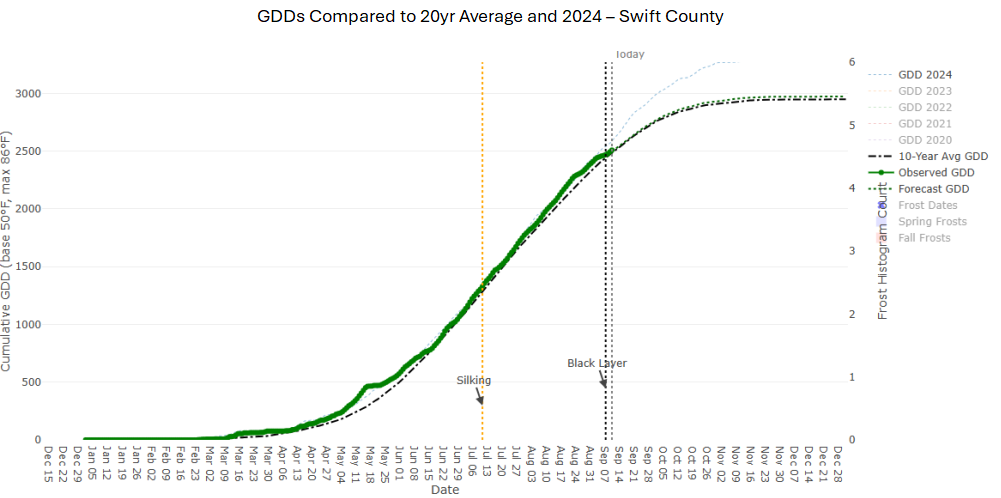
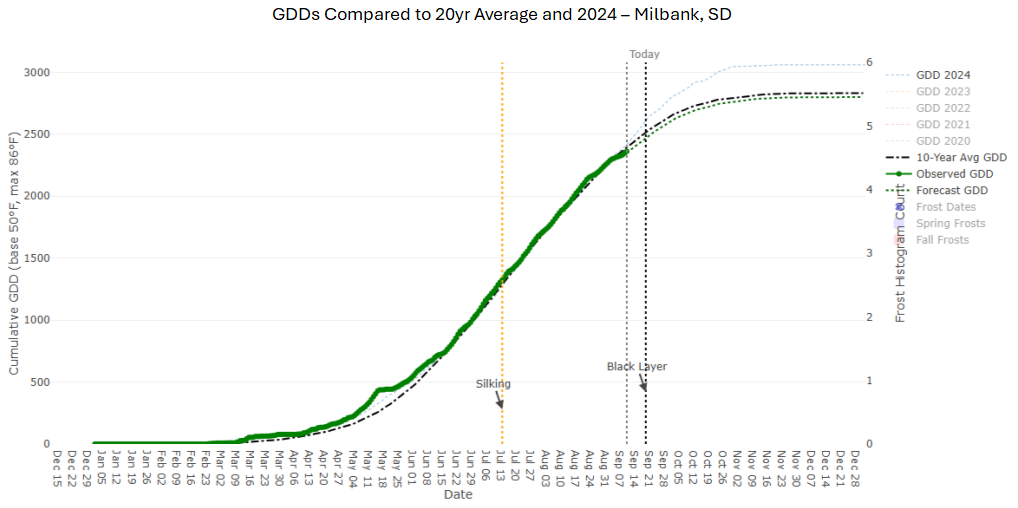
~~~~~~~~~~~
2025 Financing Options
With 2025 planning well underway below are some very good financing options to use if needed for all of your 2025 inputs.

For spring 2025 fertilizer you can lock in 5.75% financing through October 10th, 2025 with the loan coming due in January of 2026.
2025 Seed

With all the seeds brands that we sell, there is still time to get it on the aggressive 1%-1.9% early financing through Nutrien Financial
2025 Chemical

Our chemicals are financed through Nutrien Financial, and like the seed programs, are extremely aggressive. 0%-3.9% options available depending on the manufacturer. Most of these Manufacture programs also leave room to include all the adjuvants that would be needed as well.
Contact your agronomist for more details with specific programs to fit your operation.
~~~~~~~~~~~
Fall Nitrogen
With harvest if full force and fall tillage underway and soil temps starting to fall, fertilizing for the 2025 crop is in full force. Putting phosphate and potassium and even some micronutrients out in the fall is and continues to be a good practice as it gives these products time to break down, being spread in the soil with the tillage passes and it also takes some of the busy spring work load off. Putting Nitrogen out in the fall however, still tends to be a controversial idea because we don’t know if what we put out in the fall via NH3, or Urea will be there when the plant needs it in the spring because of leaching or volatilization.
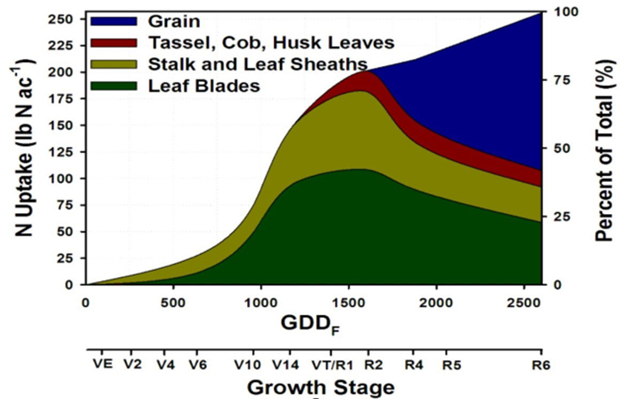
Above is a Nitrogen demand diagram with the plant stage and GDU’s. As you can see we need the Nitrogen to stay put for a long time, as we don’t start to see the major demand start until V8-V10 which on average comes around the mid-June timeframe usually. Generally, we see better utilization of a multiple pass program for N starting with a spring preplant application followed by a side/top dress application closer to the beginning of the demand period. This tends to lead to more bushels and more efficient N usage.
If you still are leaning towards a fall N application here are some things to consider.
First thing is we have to make sure that a fall application is permitted as there are some areas that a fall N application is prohibited. Below is a link to the MDA’s interactive map to see if your field falls in the prohibited area. Also, an example of the map that you will find.
https://mnag.maps.arcgis.com/apps/webappviewer/index.html?id=47a342afe6654640b935c8e76023da92
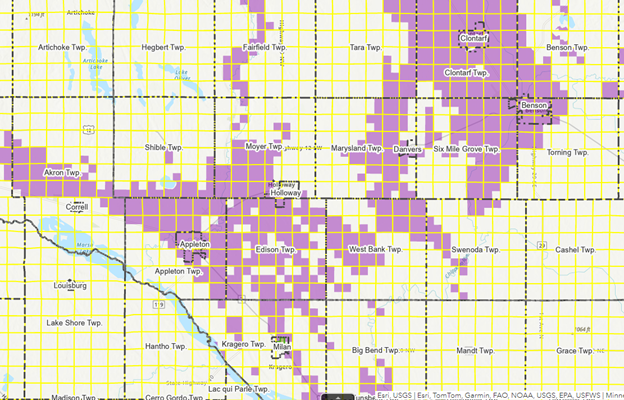
If you are able to and are going to apply N in the fall, here are a few things we can do to improve our odds of retaining the nitrogen until spring when we need it.
First and foremost – Ensure the soil temps have cooled to below 50 degrees Fahrenheit.
Encapsulated Nitrogen – PurYield 1 Polymer coated Urea (45-0-0). This like ESN, is encapsulated which protects and won’t release N until there is enough moisture to do so. It is a better option in the fall, as well as if your doing a single pass in the spring to blend with Urea to extend N availability to the plant
Nitrogen Stabilizers – Products like Instinct Next Gen for Urea or UAN, or if you’re using NH3 it would be N-Serve. These are a urease inhibitor and will help to prevent the N from converting from the ammonium form to the nitrate form which keeps it from leaching through the profile. These are designed to treat the soil, not the product.
Check with your agronomist for more information on the best Nitrogen program for your operation.
~~~~~~~~~~~
Disease Pressure
With the weather and field conditions that we have and have received, disease pressure in all the crops will be and is at a high point. Also, with the crops getting to or starting the reproduction phase, now is the time that we really need to keep the plants healthy and functioning at full capacity. Below are some of the common diseases that we find in our area per the crop, not all are equal in pressure or severity, but the one commonality with them is they all favor wet/humid conditions.
Corn: Soybeans:
Anthracnose Anthracnose
Eyespot Brown Stem rot
Grey Leaf Spot Stem Canker
North Corn Leaf Blight White Mold
Common/Southern Rust Frogeye Leaf Spot
Smut Rust
Tar Spot Cercospora Leaf Blight
We have many options like Trivapro, Miravis Neo, Delaro Complete, Veltyma, Priaxor and others, contact your Agronomist with questions and the best option to treat with.
Click on the either link below for more information on corn and soybean pest identification and management.
https://extension.umn.edu/corn/corn-pest-management
https://extension.umn.edu/soybean/soybean-pest-management
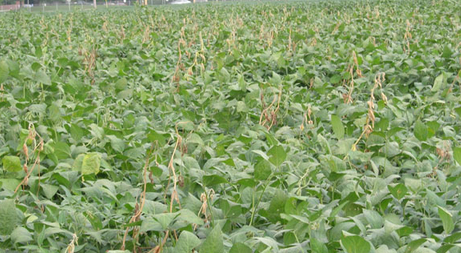
Figure 1 White Mold
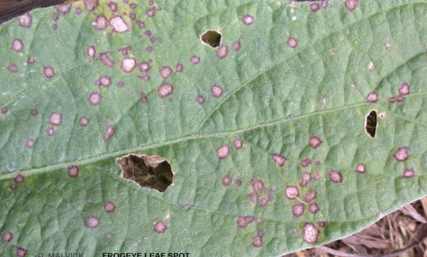
Figure 2 Frog Eye Leaf Spot
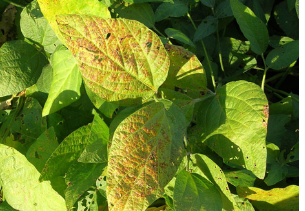
Figure 3 Cercospora
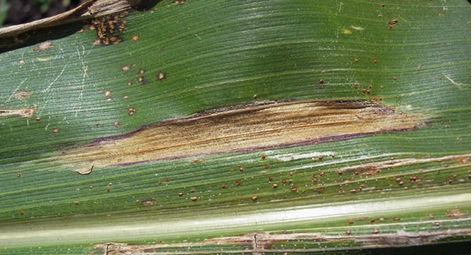
Figure 4 Northern Corn Leaf Blight
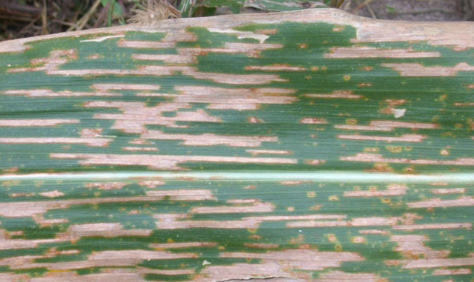
Figure 5 Grey Leaf Spot
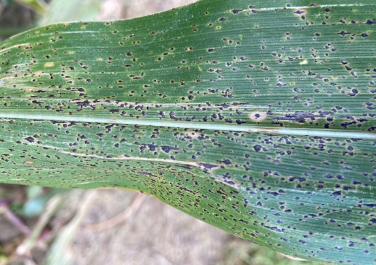
Figure 6 Tar Spot
~~~~~~~~~~~
Insects
This is always a hard decision to treat or not to treat for insect pressure whether its aphids, bean leaf beetles, potato leafhopper, soybean looper, or spider mites or all the above. Our biggest threat year in and year out tends to be the soybean aphid, and this year is no different. We have reports and have been seeing counts from 0-150 already. Here are some picture of what to look for when scouting.

Figure 1 Soybean Aphids
When scouting for aphids, focus first on the newest trifoliate of plant and work your way down. Treatments for these vary as we have seen some cases of resistance to some chemistries, but using two modes of action often alleviate these concerns.

Figure 2 Soybean Looper

Figure 3 Bean Leaf Beetle
The two above insects are what we classify as leaf or plant defoliators.

Generally, we want to wait until damage gets to the 30% stage before targeting these pests. Anything less than 30% tends not to be yield limiting but does still open the plant to disease. It’s always a good idea when making or adding fungicide in the tank in these cases to help the plant either stay healthy or stave off potential disease that may try and access the open tissue.
As with any type of application in crops it is important to do it right here are some tips to ensure your fungicide or insecticide pass is more successful.
- Plenty of water – 15-20 gallons with the right nozzles
- Timeliness – Make sure to scout to ensure we are at that target threshold or plant stage.
- Rates – with resistance issues, a multiple mode of action for both treatments is vital
- Adjuvants – As with weed control, the proper adjuvant will drastically increase effectiveness and success.
- Product selection – there are a lot of generic products on the market, know what your using.
~~~~~~~~~~~
Nitrogen Loss
Nitrogen loss can happen many different ways, with the recent wet weather we are going to focus on the ones that pertain to that.
Nitrate form is the most common nitrogen that will be lost due to wet weather. For instance, Urea will quickly turn into ammonium in the soil which does not leach easily, but it can be very soluble and move with water throughout the soil profile, putting it below the root zone.
Denitrification happens in fields where water tends to pond up. Soils depleted of oxygen because of saturation will experience loss of nitrogen because the soil microorganisms that convert nitrate to gas form will be lost due to no oxygen in that soil. This typically happens within 24 to 48 hours after saturation. Where water is ponding expect to lose up to 5% of applied nitrogen daily. 150#’s applied = 7 lbs daily. So areas under water for 3 days could lose up to 20 pounds.
A couple things to consider would be timing of the next application of nitrogen.
If you can side dress additional nitrogen in the form of 28% or top dress urea that may be a wise investment depending on when you can get back in the field. Corn will start using nitrogen more rapidly at V5 and onward so getting nitrogen on the field between now and V5 is crucial, especially if you already plan to split apply your nitrogen.
For fields that have all the nitrogen on up front or have fall nitrogen applications it may be a good idea to evaluate if additional nitrogen can benefit that field, based on how much was put on, the amount of rain, drainage and soil type.
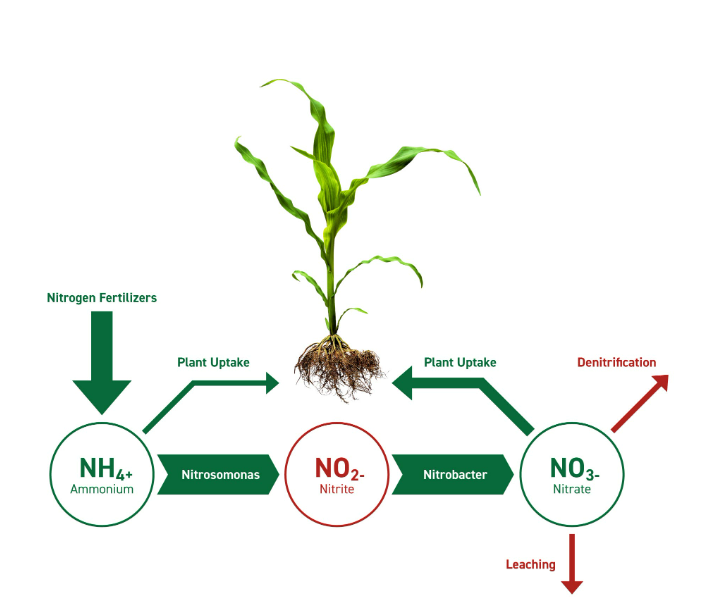
Contact your local agronomist to discuss your field situation and see if utilizing in season nitrogen will benefit you!
For more information on this check out this link
https://blog-crop-news.extension.umn.edu/2017/06/wet-spring-weather-and-nitrogen-loss.html
~~~~~~~~~~~
Post a very high Soybean Cyst Nematode year, and planting into wetter soil conditions, be sure to ask about the appropriate seed treatments when scheduling your Soybean Seed Pickup or Delivery
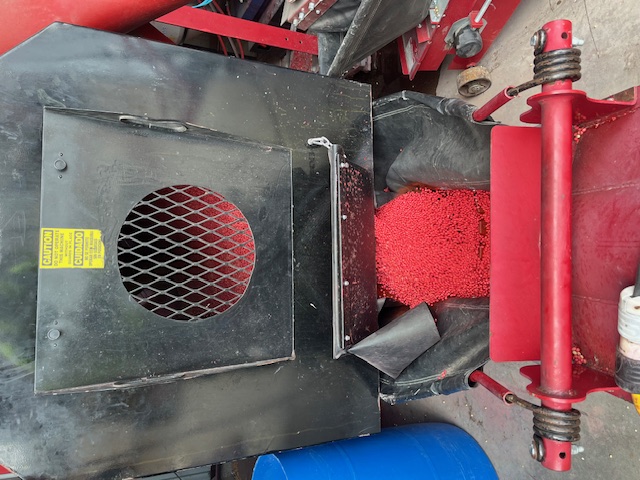
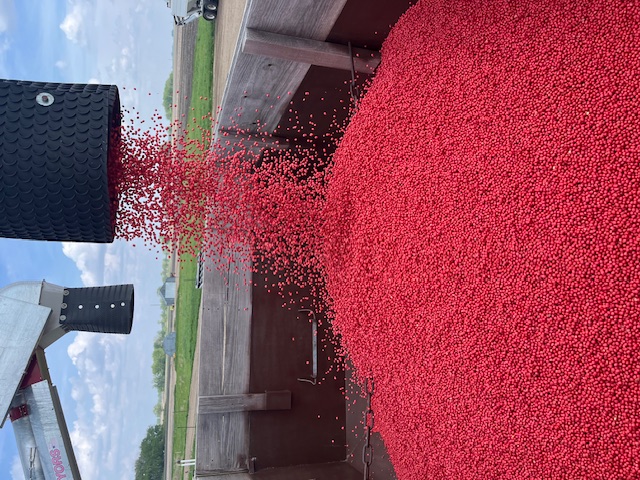
Soybean Seed Treating Options
Cruisermax APX - Best in class vigor from the Cruiser and protection from PCBX for phytophthora and pythium stacked with an elite insecticide.
Salto - Best in class SDHI fungicide for SDS and Cyst Nematode protection
Dyna Start 3P+ - is the only soybean seed treatment that combines EPA-approved PGR technology with Rhizobia inoculant: Triple-charged to Prime, Propel & Protect.
Headsup - Enhanced protection against SDS and White Mold
~~~~~~~~~~~
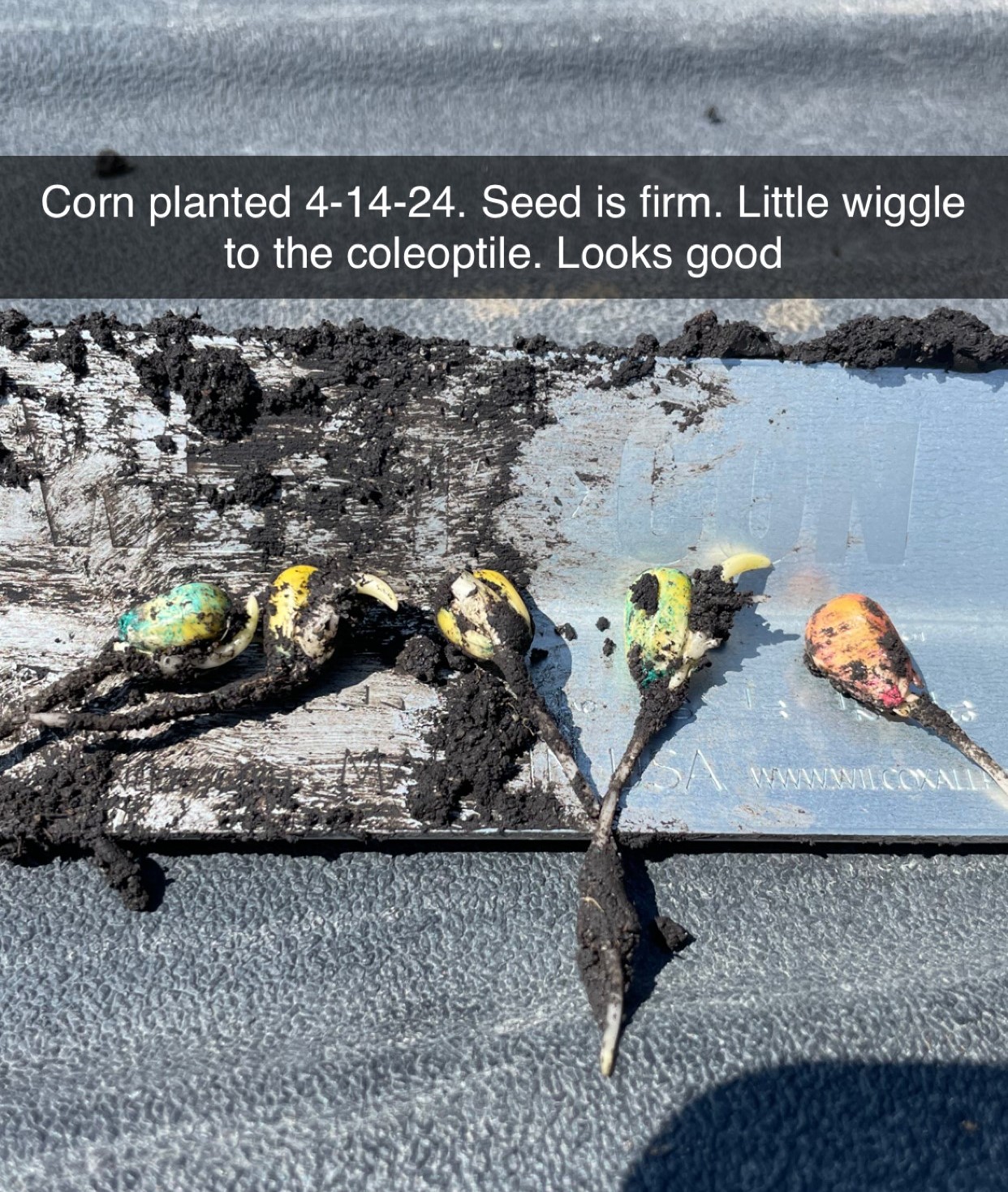
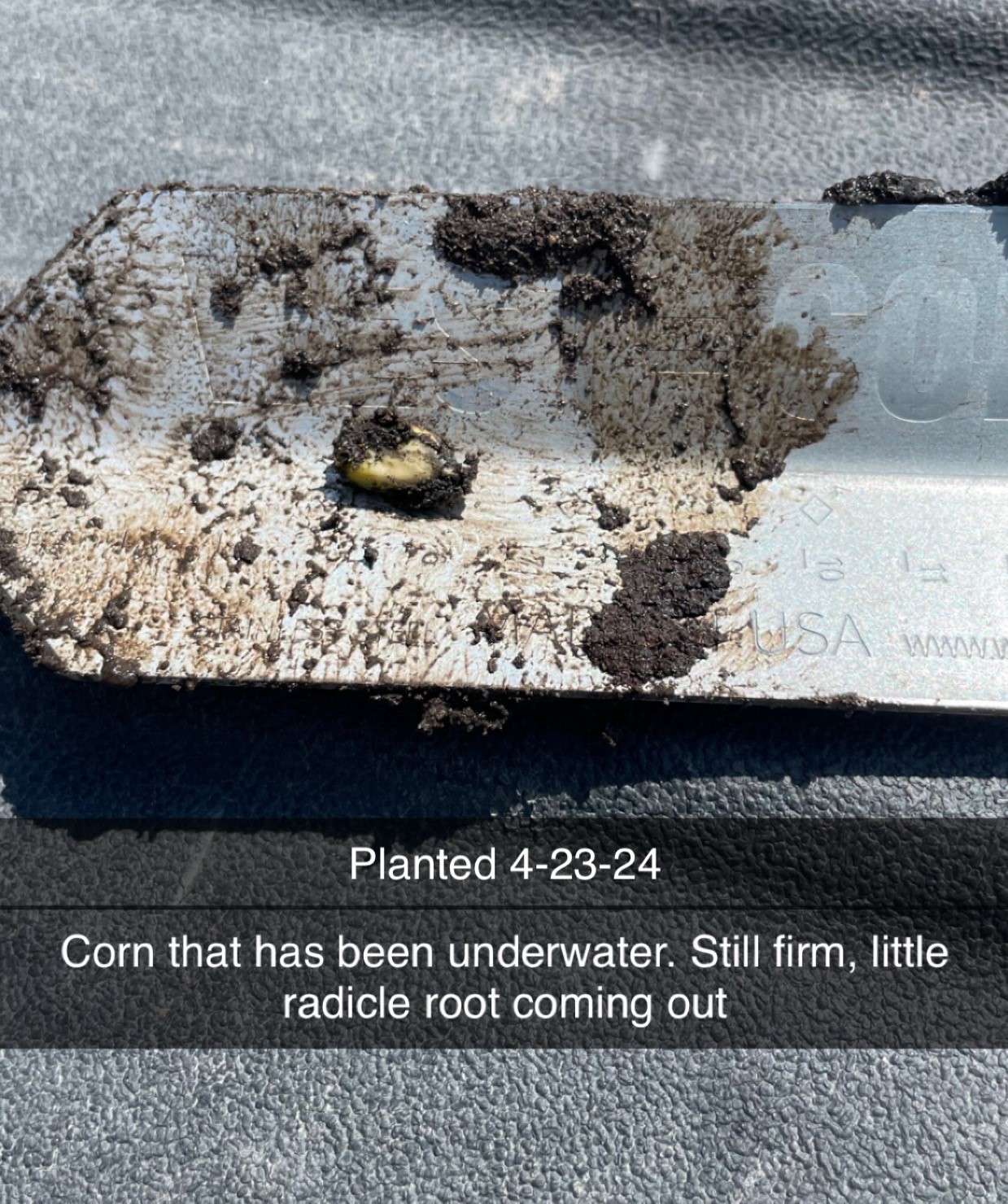
Monitoring corn fields for stalk quality
With all the curve balls mother nature has thrown our way this year, from the drought this summer to the recent hail and windstorms, it is critical to scout fields early to determine which one’s might need to be harvested first or earlier to avoid losses due to lodged corn. What happens during grain fill in a drought, a plant that is under stress will “cannibalize” its own stalk, leaves and roots to develop the ear. Nothing can be done at this stage; however, you can minimize yield and quality losses by harvesting earlier than planned.
Fall soil sampling may be the key to spring crop management decisions
Fall soil sampling provides key benefits. Ground conditions are typically more favorable than in spring, allowing us to get a better core sample for more accurate analysis. Fall sampling also allows you the winter months to think about what your field needs are. With current fertilizer prices being higher than previous years, you have time to make those decisions and lock in your spring fertilizer based on your soil analysis.
~~~~~~~~~~~
Drought effects on corn & soybeans
It is no secret that dry weather continues to be a concern across most of the area. Dry weather can hinder top end yield in the V5 to V8 stages of corn growth when the number of kernels per row is set. We see some strange things when it gets dry. Looking at our growing season thus far, most of the crop was planted in cool, dry soil. It was tough to get a perfect stand and weed control has been a battle. A common deficiency we see in corn in drought is potassium(K). Dry weather due to lack of moisture is causing the roots to fail to take up potassium. K deficiency starts on the tips of the lower leaves on the outside leaf margin. In truly deficient soils it will work its way up multiple leaves early in the growing season. In dry years, especially during the V5 stages of corn when the plant starts putting on nodal roots, K deficiency can often be confused with nitrogen deficiency. Even if it does rain and the plant starts utilizing the K in the soil it is unlikely we will see those lower leaves green up.

As beans near the reproductive stages, during drought stress, the soybeans flip their leaves so the underside is exposed to the sun light, rather than the darker top leaf being exposed. The leaf will then clamp to reduce the amount of sunlight that will hit it. The soybean plant will do this to reduce stress in the plant as well as slow down the amount and size of leaves it produces. Soybeans can handle drought stress in the early reproductive stages of the plant, but it can be very detrimental prior to pod fill and even in pod development.

~~~~~~~~~~~
Restricted use pesticide license
During this winter season, it is a perfect time to make sure that your private pesticide applicator license is current and not expired. Renewal now allows for a quick process of picking up chemicals in the spring. Having an expired license also means that you are unable to purchase restricted use chemical until it is renewed. If you have questions or want help checking your license, please contact your West-Con Sales Agronomist or visit the link below for more information.
https://www.mda.state.mn.us/private-pesticide-applicator-certification
~~~~~~~~~~~
The Importance of Soil Sampling
It is that time of year when the combines are getting greased and we are gearing up for another harvest, which seems to be shaping up to be a very good one yield wise. This is the time of year that we should be evaluating our nutrient management plans and start finding out which fields need to have a soil test done on them.
There are many great benefits taking a soil test. Nutrient levels being the key one everyone thinks of but it also gives you PH, cation exchange capacity (nutrient holding capacity) and organic matter amongst others. A soil test should be treated like a report card for your nutrient management plan. Evaluation along with the proper fertilizers and at the right time all play a significant role on the results of the soil sample.
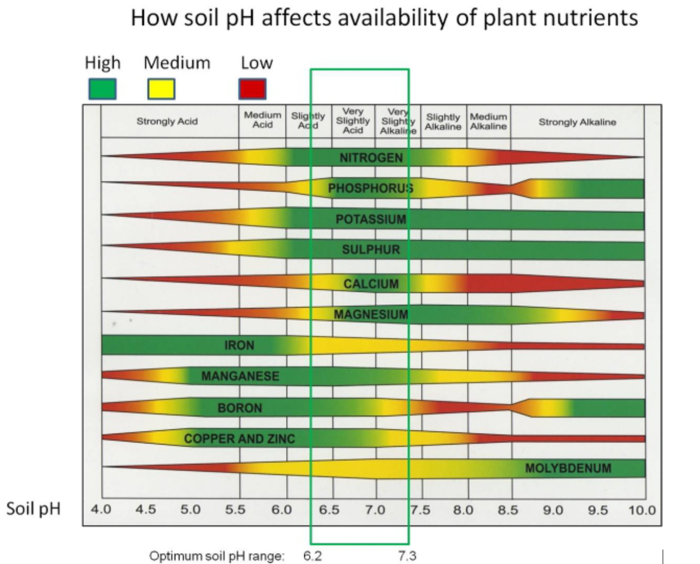
When taking a soil sample, make sure to take eight to ten cores per sample from representative areas of the field. You can use soil maps (majority of soil type) or even yield map history. Basic rule of thumb is don’t poke the probe in the cow pie and stay off the top of hills. Once you sample the field, get into the rhythm of taking those cores from the same place every 2 to 3 years. You can GPS the coordinates to come back to the next time. If you do it in the fall, try to stay into the routine of doing it in the fall for those fields.
.png)
West-Con can either take the sample for you or you can get some soil sampling bags from us and you can bring them in to us and we will get them to where they need to be.
~~~~~~~~~~~
Fall Fertilizer Application
With small grain harvest all but wrapped up in the upper Midwest, it is a good time of the year to start thinking about fall fertilizer application of phosphorous and potassium. We sometimes forget the importance of these two macronutrients so as a reminder: phosphorous plays a role in photosynthesis, respiration, and energy storage and transfer. Potassium increases root growth, boosts drought tolerance, and enhances photosynthesis. A few benefits of applying these nutrients in the fall are they are more plant available in the spring, you can take advantage of early season fertilizer prices, and less wait time then in the spring.
A few things to remember when applying fall fertilizer is that the earlier you get P and K applied, the better. Once applied, P and K will not move with proper management. It is also good practice to get fertilizer incorporated as soon as possible to not lose any nutrients due to erosion or other factors that could move nutrients off site. Finally, make sure spreaders or spinners are calibrated correctly, as misapplication can be costly.
For more information and fall fertilizer prices contact your West-Con Agronomist.
~~~~~~~~~~~
Fall Fertilizer Restrictions
The Minnesota Department of Agriculture has come out with a groundwater protection rule. This restriction will begin September 1, 2020. The purpose of this rule is to minimize potential nitrogen fertilizers that can contaminate the state’s groundwater and to protect our drinking water.
Part 1 of the Ground Water Protection Rule restricts the application of nitrogen fertilizer in the fall and on frozen soils. Certain areas in the state will be subject to this new restriction. For example: If you farm in an area with vulnerable groundwater or protected areas around a public well with high nitrate, you cannot apply nitrogen fertilizer in the fall.
There are some exceptions to the fall nitrogen fertilizer restriction. Fall nitrogen can be allowed in the form of MAP and DAP or micronutrient fertilizers containing nitrogen if the average applied rate doesn’t exceed 40 pounds of actually N per acre in a field.
For more information you can visit the website below or contact your West-Con Agronomist.
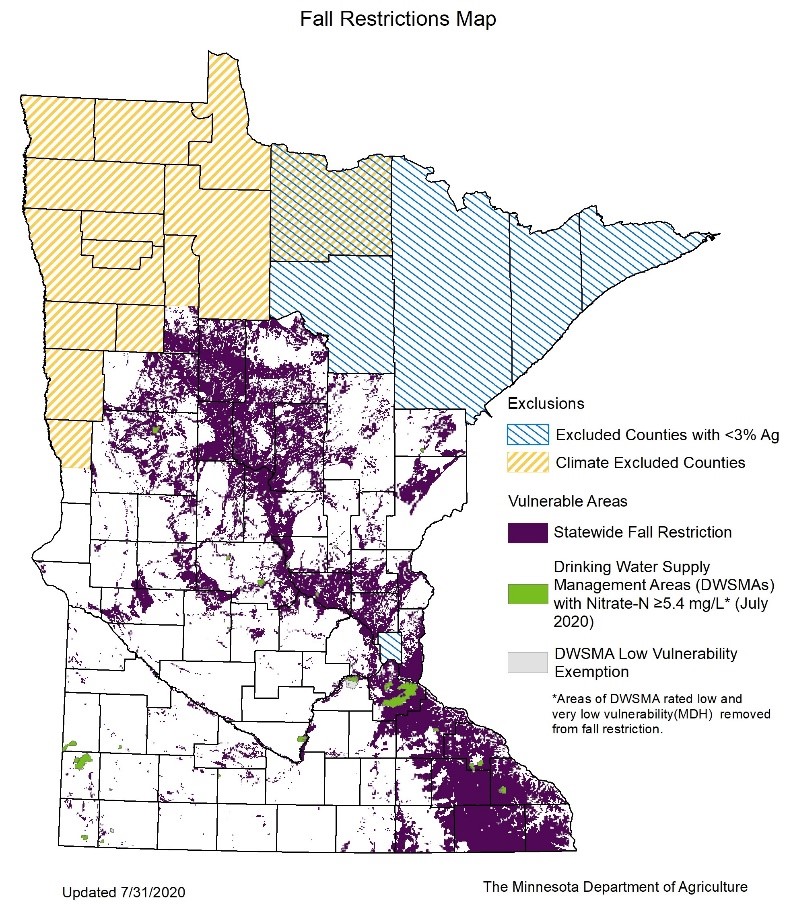
~~~~~~~~~~~
Aphids
This week’s topic is soybean aphids, the damage they do, and scouting for them. Soybean aphids are a small insect that pierces the leaves to suck out sap. Aphid feeding causes leaf puckering, stunting, reduced pod and/or seed counts, and smaller seeds. Yield could be further reduced when heavy infestations result in dark sooty mold on the soybeans.
Scouting for aphids has really started up the last week or so. One way to start looking for aphids is to go along groves, streams, and CRP. The reasoning for that is because aphids like to over winter in buckthorn as eggs. From there, move out into the fields looking at 10-15 plants depending on the size of the fields and start counting aphids. When you are out scouting, you should be looking all over the plant to get an accurate count. Aphids will usually start off on the greenest part of the plant and move around from there. They could be under the leaves, on the stem and on the pods. The U of M says the threshold is an average of 250 aphids to a plant on more than 80% of the plants and the aphid population is increasing. According to the U of M, we can see damage on the soybean up through R6 (pod fill at the upper most nodes) at which time we will also have to watch the pre-harvest interval on chemicals.
If you have any questions about aphids, scouting, and/or spraying please give a call to your local West-Con Sales Agronomist.

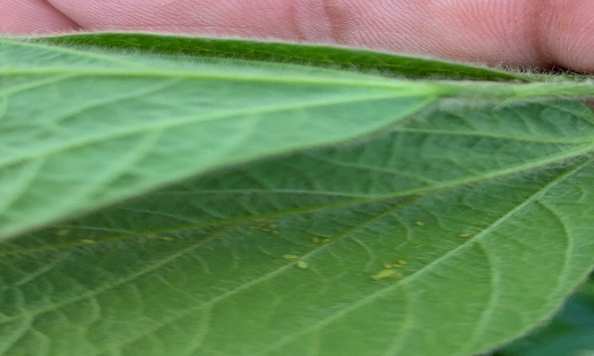
~~~~~~~~~~~
Soybean Rescue Treatments
Now that we have made a post-emergent pass on the soybeans, many are hoping to be done spraying in those fields. However, in some of the wider-rowed soybeans, this may not be the case. As we wait for the rows to close, waterhemp and other tough weeds continue germinate and grow at a rapid pace. It’s important to continue to scout soybean fields for weeds into July, or until the soybean rows have completely closed.
Weed escapes are common and should be addressed as soon as possible. Weeds should always be sprayed before reaching 4 inches in height for the herbicides to be effective. The biggest obstacle is the limited number of herbicides labeled for spraying late in the year. Carryover to next year’s crop and pre-harvest intervals are concerns that should be taken into consideration. Products containing dicamba (xtendimax) and fomesafen (flexstar) are two of the products that are not labeled for late-season use. Be sure to consult the label before applying any herbicides. With contact herbicides such as Liberty or Cobra, coverage is crucial for effective weed control. Make sure to use 20 gallons of water per acre and flat fan nozzles for better coverage.
Here are a few rescue treatment options:
Enlist One- can be sprayed twice per season at a maximum of 2 pints per acre per pass up to the R2 stage. Enlist can only be applied to enlist-tolerant soybeans.
Liberty- Can be sprayed up to R2 on Liberty tolerant soybeans.
Cobra- Can be sprayed up to the R6 stage.
Roundup Powermax- Can be sprayed up to the R2 stage
Volunteer corn is a common weed that can cause significant yield loss. Include a product such as Fusilade, Select Max, or Targa to take care of the volunteer corn. If applying these herbicides, add HSOC to increase the vol. corn control.


~~~~~~~~~~~
Insects
Now would be a good time to start scouting for insects in your crops. Some of the major insects that can cause leaf damage and stunt the plant’s growth could be starting to show up in some fields. Some examples of these insects are the two-spotted spider mites, aphids, potato leaf hopper, soybean looper, army worm, and thistle caterpillar. The insects listed above mainly feed on the leaf surface or pierce the surface. Eating holes/piercing the leaves can eventually result in stunted plant growth, disease infection, or can even kill the plant.
Two-spotted Spider Mites like hot dry conditions. Economic Threshold is 10 mites per mid-tier Leaflet during the same period of time.
Soybean Aphids overwinter in buckthorn and are usually found in soybeans in late May through August. Economic Threshold is 250 aphids/plant or less depending on additional application passes that may be made.
Potato Leafhopper are commonly found in alfalfa and soybeans and are often present in field crops in late June or July. Economic threshold is one nymph per 10 leaves.
Soybean Looper are commonly found in soybeans and are often present in field crops in late July or August. Economic threshold in soybeans is treated prior to bloom if 30% foliage loss has occurred, or after bloom when 15% foliage loss has occurred.
Thistle Caterpillar are commonly found in soybeans and are often present in field crops late June to late July. Economic threshold is reached at 30% defoliation in the vegetative stages or 20% defoliation in the reproductive stage.
Insecticide Program examples:
- Leverage 360 - 1.8 oz/acre + Warhawk - 4 oz/acre + Attach - 2 oz/acre
- Great Knockdown with Residual- Economical
- Hero - 5.12 oz/acre + Attach - 4 oz/acre
- Good combination product- with a respray program
Contact you West-con Agronomist for more recommendations to help decide which treatment plan is best for your acres.
Thistle Caterpillar Soybean Looper
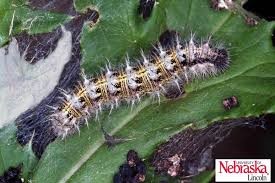
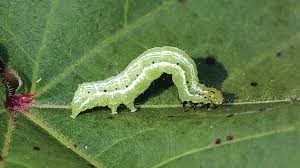
Potato Leafhopper Soybean Aphid
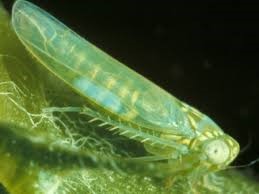
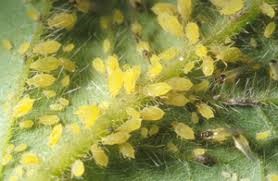
~~~~~~~~~~~
White Mold
It is about that time of year again where we need to be thinking about the effects of white mold on your beans. Over the last 2 years we have had some of the worst outbreaks of white mold in beans. To understand White mold, we need to look at its life cycle. It starts as sclerotinia in the soil and grows into a little mushroom. From there when it matures it shoots spores up into the air. The spores are what attaches to the plant and looks for an entry point to affect the plant. The usual entry point is flowers that have either dropped off or aborted. Another entry point would be if the plant had suffered some type of injury and was open. Part of the issue of white mold is that you must treat before you see it otherwise you are to late. A couple things to think about is has that field had an issue in the past of white mold pressure and what is the forecast looking like going forward.
There are different treatment programs
- 2 pass fungicide treatment – the first pass would be towards the end of June and the 2nd pass would be 14 days later
- 1 pass fungicide treatment- would look at some time around the first week in July
- Cobra Treatment- Cobra has a suppression label for white mold and the application window would be some time after the first week in July
If you are looking for some helpful recommendations talk to your West-Con agronomist to help, decide on what treatment plan is good for your acres



~~~~~~~~~~~
Herbicide Application Timing
With corn spraying about to get wrapped up and a good start on soybean spraying, listed are some of the main products and time frame they can be applied up to.
Soybeans:
Enlist – Can be sprayed up to the R2 Stage. R2 is when there is a flower starting on the upper most 4 nodes.
Liberty – Can be sprayed up to the R2 Stage.
Roundup Power Max – Can also be sprayed up to the R2 Stage.
Flexstar (Battle Star) - The cutoff date to get Flexstar or similar products sprayed is the first week in July. If you spray past this date, there is too much risk for carry over into the next year for corn.
Xtendimax – June 20th or 45 days after you planted is the cut off date to spray Xtend. West-Con does not currently spray Xtend through our sprayers.
Pictured is Flexstar carry over
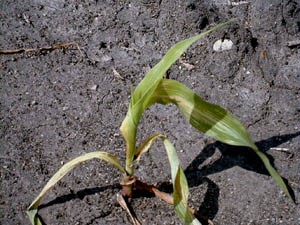
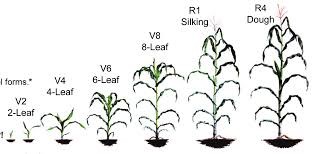
Corn:
Laudis – Up to V8. If tank mixing with atrazine and the corn gets bigger than 12”, swap out the Atrazine with 6 oz of Broclean (Buctril).
Callisto – Up to V8 or 30” corn, whichever comes first.
Diflexx – Up to V6 or 36” corn, whichever comes first
Status – V2 -V10, or 36” corn, whichever comes first.
These are all just guidelines. Always remember to read and follow label directions.
Call your West-Con Agronomist with any questions.
~~~~~~~~~~~
The importance of in-season nitrogen
In-season nitrogen can benefit your corn in multiple ways. Nitrogen leaches in the soil, meaning it moves down through the soil profile throughout the year. Many times, especially on lighter soils, the roots are not able to keep up to the nitrogen as it moves down. Nitrogen plays a crucial role in ear and kernel development later in the year and plant health overall. Per the picture below, rapid nitrogen uptake usually begins at around V8, so making an in-season application of nitrogen around V4-V6 ensures that your nitrogen will be available when the corn plant hits V8. Lack of nitrogen in your corn crop can result in lack of vigor, underdeveloped roots and reduced uptake of potassium, amongst other nutrients. All these negative consequences result in reduced photosynthesis and reduced kernel count and/or kernel abortion, and if it happens later in the season we could see cannibalization of nitrogen from the stalks to go to the cob which would result in a weaker stalk and reduced late season standability.

Sulfur is another plant nutrient that is leachable in the soil. Forty years ago, sulfur was not as necessary of an application required in corn fertilizer. Over the years, due to anti-pollution laws, sulfur(S02) has become less available in the atmosphere making a need for it in fertilizer blends. Sulfur plays an important role in plant health because it promotes photosynthesis, chlorophyll formulation, and nitrogen fixation. Deficiencies are likely to occur first on lighter soils, soils with low organic matter and soils with a low CEC capacity but can happen in any type of soil if it is neglected. Because it is leachable in the soil it is a perfect opportunity to add it in with your nitrogen. Just about half the sulfur is taken up in the plant by tasseling time, making it a very viable nutrient companion with your urea or 28%.
With the fall nitrogen limitations set to take place this year we need more solutions to offer our growers for in-season nitrogen management to stay within the Minnesota Department of Agriculture guidelines. At West-Con we offer these solutions in the form of top dressing urea and AMS or having 28% available for 24-7 for pick-up with ability to blend in ATS(sulfur) as it is loaded.
Contact your agronomist if you are interested in any of these options.
~~~~~~~~~~~
Now that crops are emerging, so are many different weed species. Competition from weeds can reduce yields by stealing important nutrients, water, and sunlight from the crop. Controlling weeds early in the year will prevent yield loss later on in the season. The “critical weed free period” is the time in a plant’s life when it is most susceptible to competition. For corn, this period lasts at least as long as V6 and for soybeans, it’s at least until V3. It’s important to scout for weeds to know how soon, and with what chemicals you will need to spray to control the weeds on your farm. By the time you can see them from the road, it’s too late. Weeds should be controlled by the time they are 3 inches tall for the herbicide to be effective.
When it comes to choosing the right herbicides, it’s important to know which weed species you are dealing with. Some weeds, such as waterhemp and kochia, can be resistant to glyphosate and be tougher to control. Herbicide programs should be based on field scouting and not all of the fields on your farm should be treated the same. You will likely need to use multiple herbicides to control the variety of weeds in a field.
To avoid resistance on your farm, be sure to use multiple modes of action. Using different chemical groups on the same weed significantly lowers the chances of it developing resistance. It’s also a good idea to use a residual product, such as Warrant or Dual, with your post-emergent herbicides to keep new weeds from germinating. This may even save a second trip later in the season to control a new flush of weeds.
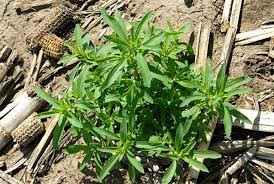
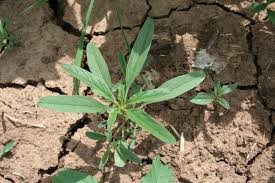
~~~~~~~~~~~
Now that we have some crops in the ground and they are starting to emerge, it would be a good time to do a stand count and here is a good way how.
- Measure 1/1,000 of an acre based on row width. In 30-inch row corn or soybeans, measure out a length of 17 feet, 5 inches and count the number of plants within that measurement.
- Repeat this process in multiple areas of the field. You typically want about 6-10 stand counts per field to be the most accurate.
- Average the number of plants in each row and multiply that number by 1000 to obtain the estimated plant population per acre.
Example: If you had 30’’ row corn, you would measure 17’ 5’’ out in a row. If you counted 30 plants within that measurement and multiplied it by 1000 you would come up with 30,000 plants per acre.

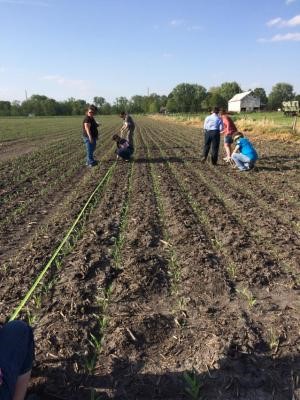
~~~~~~~~~~~
Some of you may be watching the weather forecast and worried about the potential for freeze damage to soybean. Many of us have been through this before. Most often things work out just fine for the soybeans. I expect Minnesota Extension agronomists will provide more information if things take a turn for the worse. In the meantime, here are some points to consider.
- Unlike soybeans, the growing point of emerged corn is still below the soil surface and protected from frost.
- Soybeans that have not emerged (including hypocotyl crook) will be OK.
- Soybean injury or death from freezing temperatures is more likely in low areas
- Soybeans in the cotyledon stage are more freeze tolerant than later stages.
- Temperatures will likely need to drop below 32 F for soybean seedlings to be killed. In an NDSU study, 50% of seedlings were able to tolerate temperatures as low as 24 F for a short time. In this same study, peas were similar to soybean, edible beans were less tolerant and alfalfa were more tolerant to frost. areas.
- Soil moisture, soil type and previous crop residue can influence freeze tolerance.
- Plants with a live growing point remaining can survive
- Plants frozen below the cotyledons will be dead.
- Yield loss will be related to stand loss and soybean compensate well for reduced stands.
- You will need to wait several days to adequately assess stand loss.
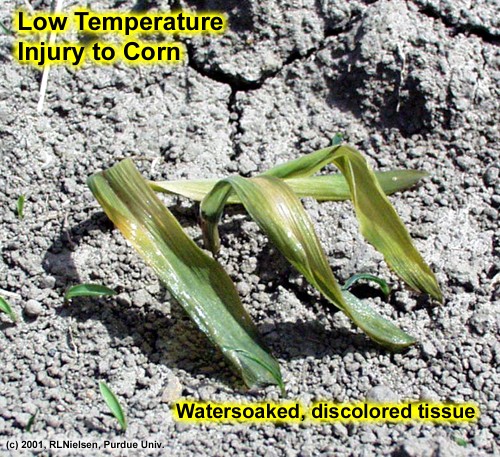
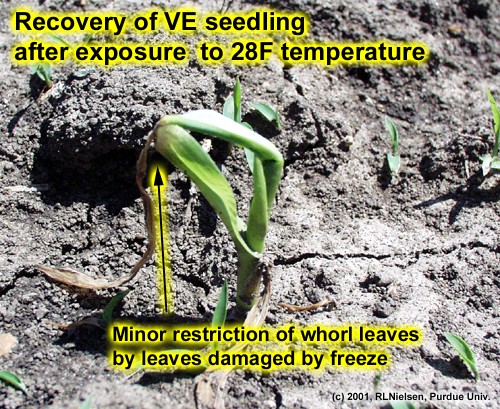
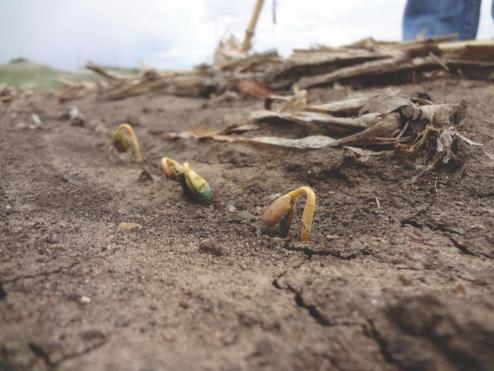
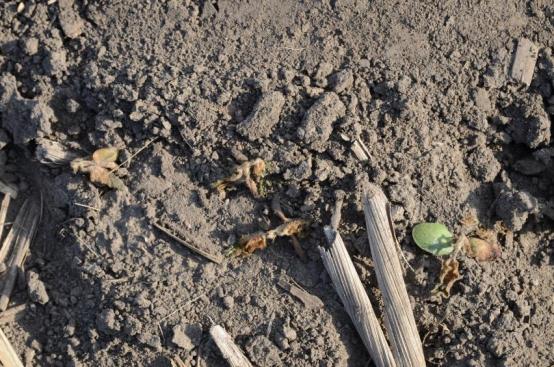
Bruce Potter
University of Minnesota Extension IPM Specialist
Selected references:
Badaruddin, M. and Meyer, D.W. (2001), Factors Modifying Frost Tolerance of Legume Species. Crop Sci., 41: 1911-1916. doi:10.2135/cropsci2001.1911
Meyer, D.W. and Badaruddin, M. (2001), Frost Tolerance of Ten Seedling Legume Species at Four Growth Stages. Crop Sci., 41: 1838-1842. doi:10.2135/cropsci2001.1838
https://extension.umn.edu/growing-soybean/spring-frost
~~~~~~~~~~~
It is that time of the year again when everybody is looking at getting into the field. One of the top priorities this early in the season is fertilizer application, which includes nitrogen. A common risk is the nitrogen loss that can occur after the application. The greatest loss of nitrogen occurs in the spring and early summer so we must take steps to ensure that the nitrogen will be in place when the crops need it. Reduce this risk by incorporating a nitrogen stabilizer, into your nitrogen source.
To protect from volatilization, use a product such as Agrotain Ultra or Nitrain:
Urea - 3 qts/ton
UAN - 5 qts/ton
To protect from leaching, use a product such as Instinct HL:
Urea - 24 oz/acre
UAN - 24 oz/acre
Have a safe planting season and contact your West-Con Sales Agronomist with any questions!
Agronomy Locations
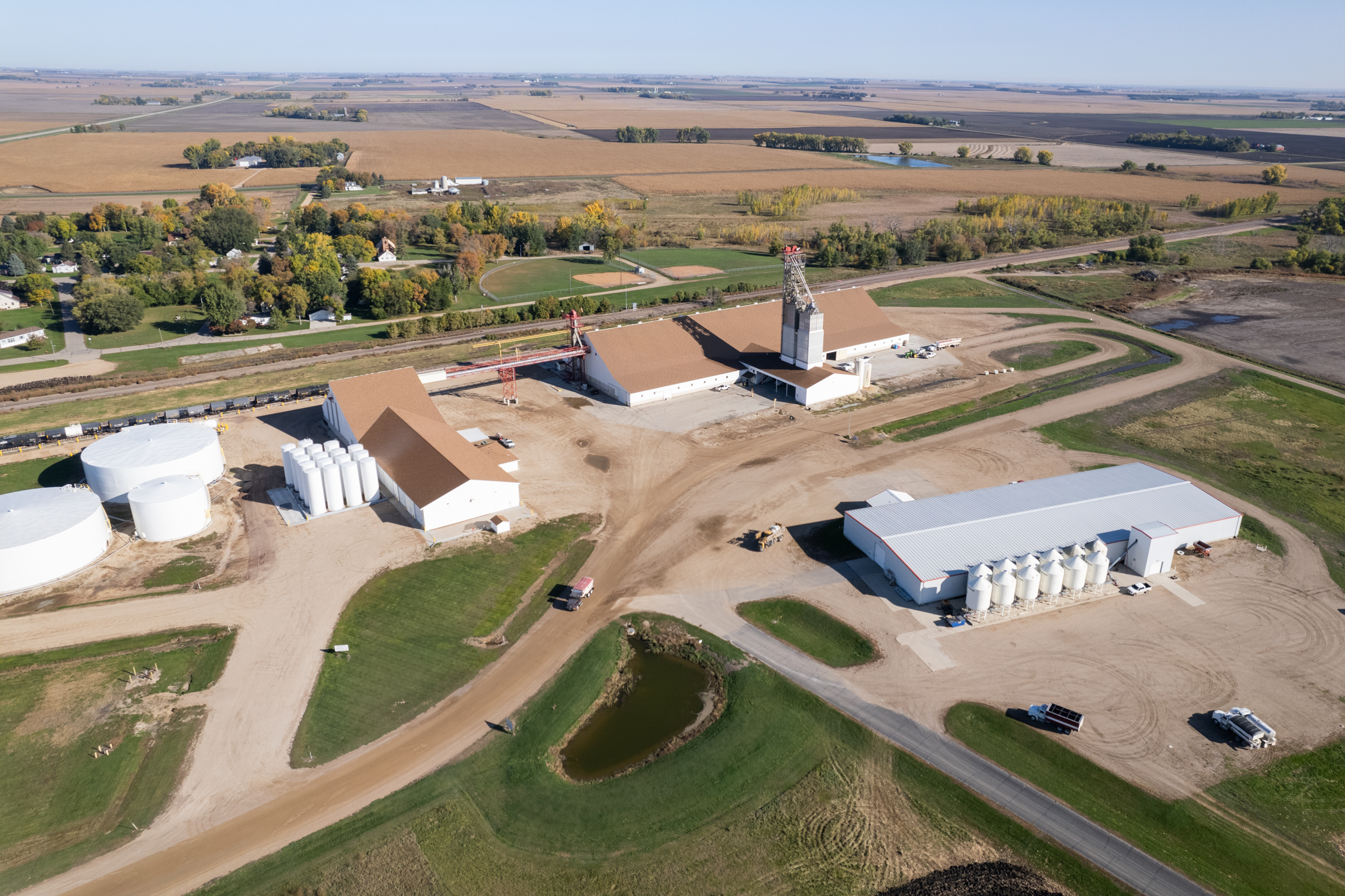
HOLLOWAY, MN
311 Agronomy Drive
Holloway, MN 56249
Dry Fertilizer Plant 38,000 Tons
Liquid Fertilizer Plant 5.9m Gallons
Seed Chemical Warehouse 33,700 Sq Ft.
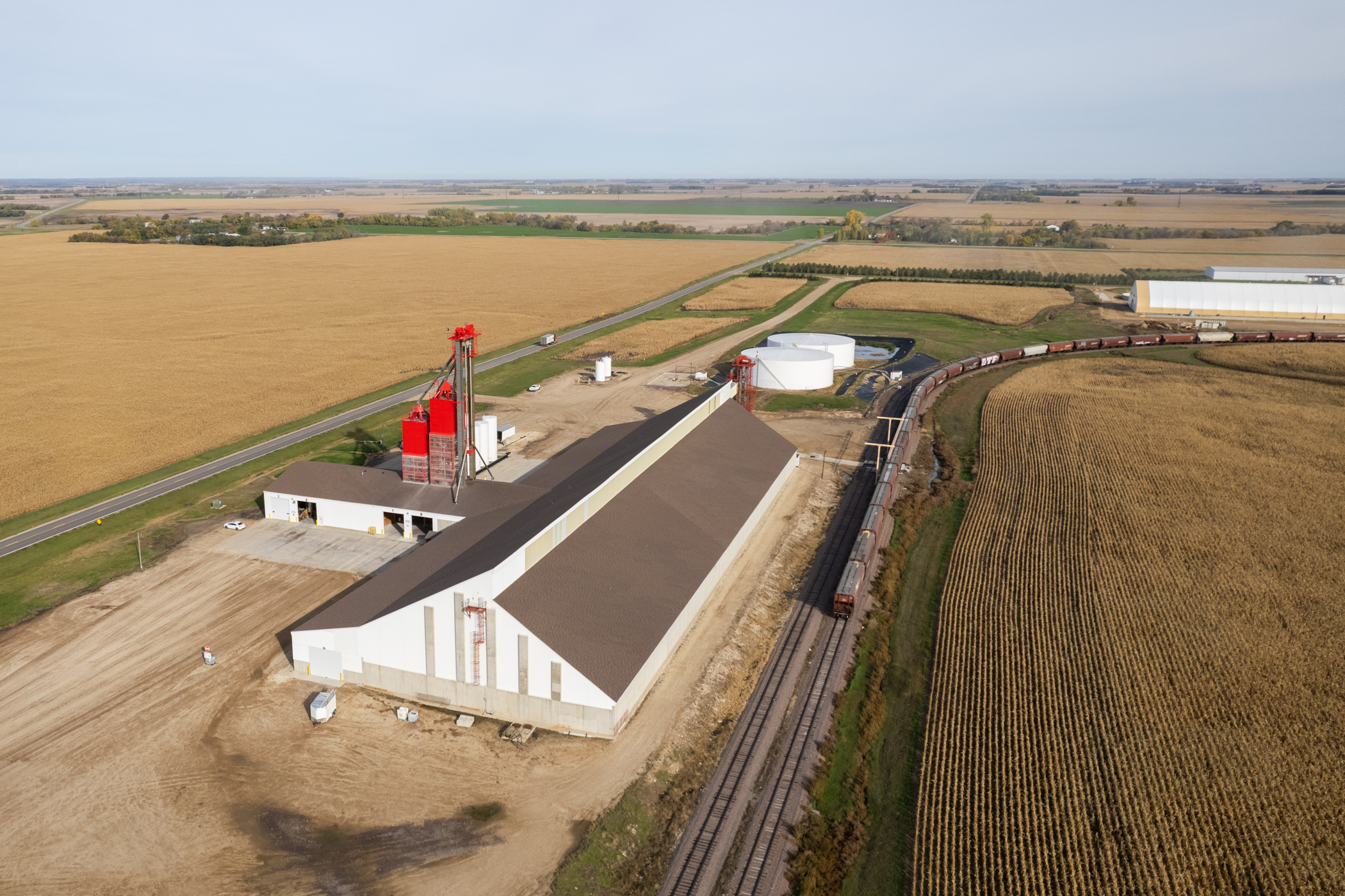
TWIN BROOKS, SD
14938 472nd Ave
Twin Books, SD 57269
Dry Fertilizer Plant 45,000 Tons
Liquid Fertilizer Plant 2.3m Gallons
Seed Chemical Warehouse 33,700 Sq Ft.
Agronomy Staff
Holloway Agronomy
(320) 394-2171 or 1-800-368-3310
Justin Golden (ext. 1236)
Brady Wersinger (ext. 1207)
Austin Mattocks (ext. 1222)
Nate Christie (ext. 1202)
Kellen Schmidt (ext. 1246)
Twin Brooks Agronomy
(605) 432-4531 or 1-800-382-6535









